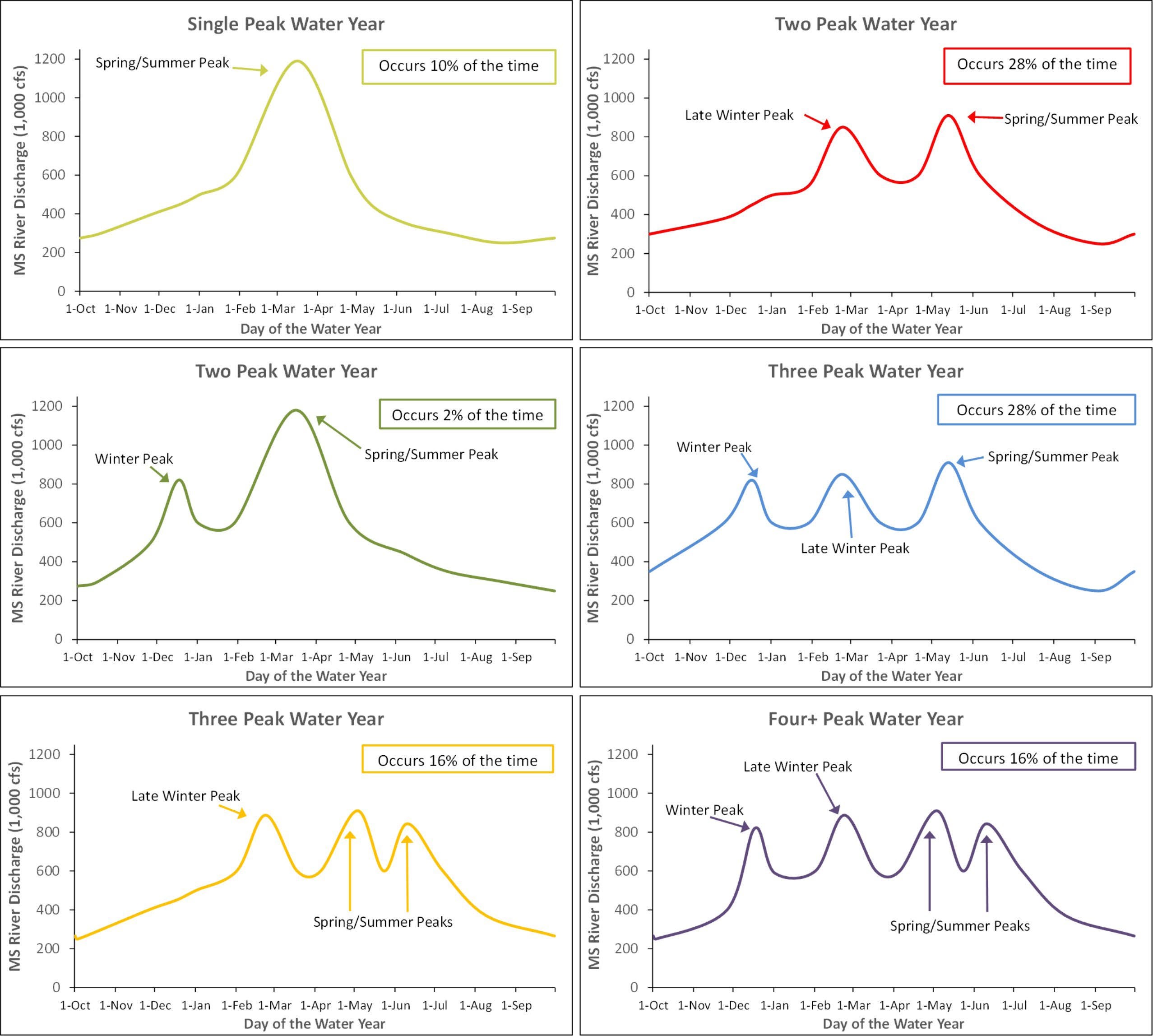Exploring the Hydrodynamics of a Sediment Diversion at Mid-Barataria
This is part two of the series “Building Land in Coastal Louisiana: Expert Recommendations for Operating a Successful Sediment Diversion that Balances Ecosystem and Community Needs.” See part one here.
Historically, the Mississippi River has periodically overtopped its natural levee and flooded the adjacent wetlands with sediment-laden water. This natural process has been interrupted by the construction of flood control levees, and the available sediment has been reduced by the construction of upriver reservoirs. The proposed introduction of diversions from the river to the wetlands in Louisiana is intended to restore some of the natural supply of sediment to compensate for subsidence and sea level rise and help rebuild land.
The Mississippi River typically has one to four high-water peaks between November and June. The rising limb of the first peak during this period tends to have the highest silt-clay concentrations. However, since the highest river flows occur on average in March, the largest sediment loads occur in this period.
The highest sand concentrations in the river occur during the rising limbs and the peaks of the floods and tend to decrease on the falling limb of the floods. If the goal is to divert the most sediment for a given volume of water, it is advantageous to operate diversions on the rising limb and near the peak of the floods.
Concerning hydrodynamic impacts, a Mid-Barataria sediment diversion would increase the water level in the river near the diversion structure by about three feet and by about one foot relative to ambient river water levels seven miles from the diversion. It is expected to take several years for a distributary network capable of conveying up to 75,000 cubic feet per second (cfs) to fully develop. During this period, careful control of the maximum diversion flows will be needed to avoid excessive flooding.
The hydrodynamic and morphological impacts of a Mid-Barataria sediment diversion on the Mississippi River include:
- A decrease in the river peak stage both upstream and downstream of the diversion site,
- A local shift in the river momentum toward the diversion side of the river, with increased currents on the diversion side and decreased currents on the opposite side,
- An increase in erosion at and upstream of the diversion, and
- An increase in net deposition opposite to and downstream of the diversion.
Finally, closing the sediment diversion on the falling limb of the flood would help to reduce depositional impacts of the diversion.
Stay tuned for the next post in the “Building Land in Coastal Louisiana” diversion operations series, about key recommendations concerning sediment load in the river, titled “The Geology of Land Building Using Mississippi River Sediment Diversions.”
For more information about the Sediment Diversion Operations Expert Working Group’s key recommendations, visit http://www.mississippiriverdelta.org/diversion-ops-report/.
Alex McCorquodale, MSc. (Fluid Mechanics) Ph.D. (Hydraulic Engineering), PE (Louisiana) is Professor and FMI Endowed Chair in Environmental Modeling at the University of New Orleans. He spent the past 20 years working on Mississippi River hydraulics and sediment transport. He has 50 years of experience teaching and conducting research in the areas of hydraulics and sediment transport. He is a member of the Sediment Diversion Operations Expert Working Group and co-author of their report, “Building Land in Coastal Louisiana: Expert Recommendations for Operating a Successful Sediment Diversions that Balances Ecosystem and Community Needs.”

